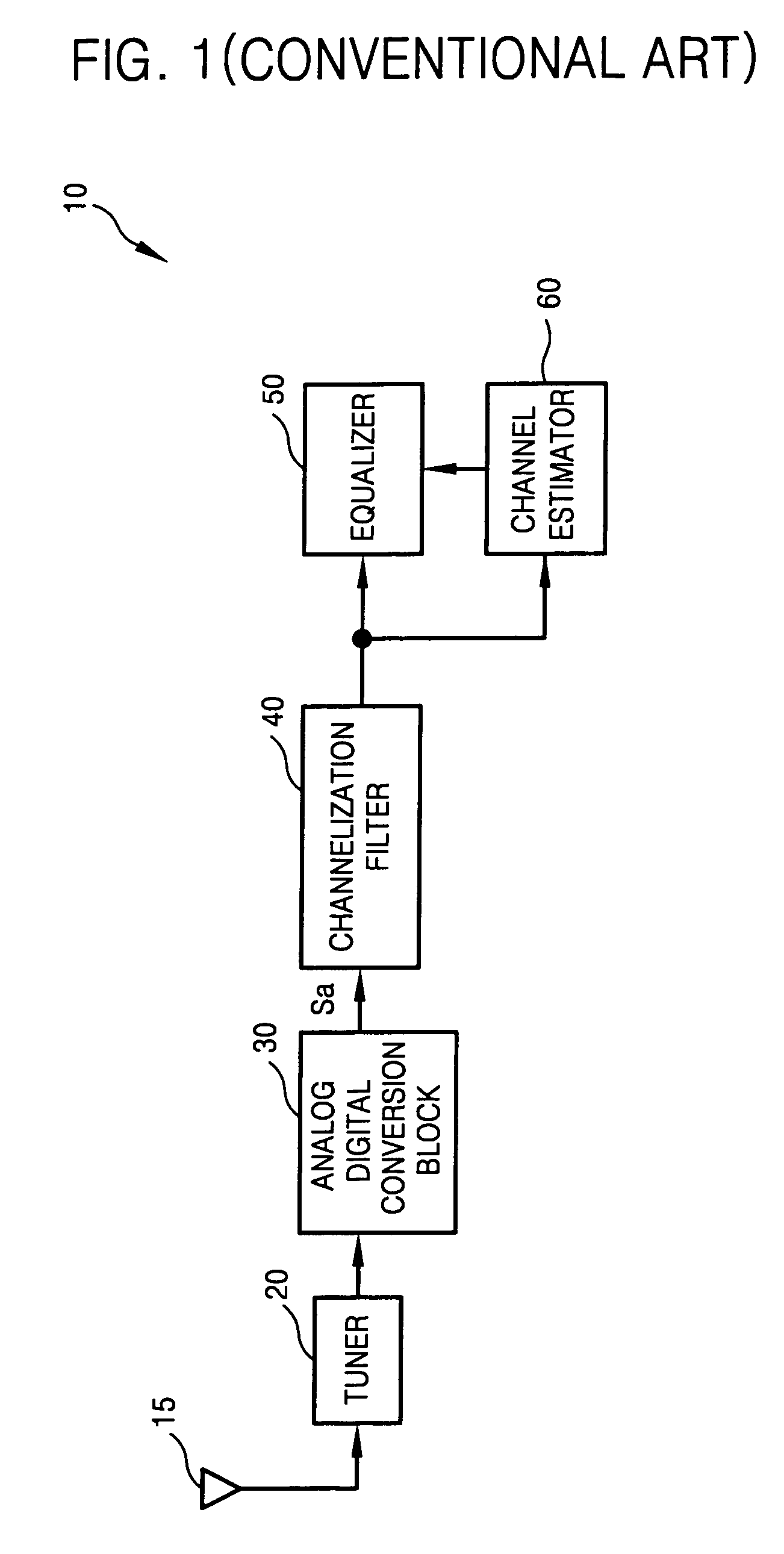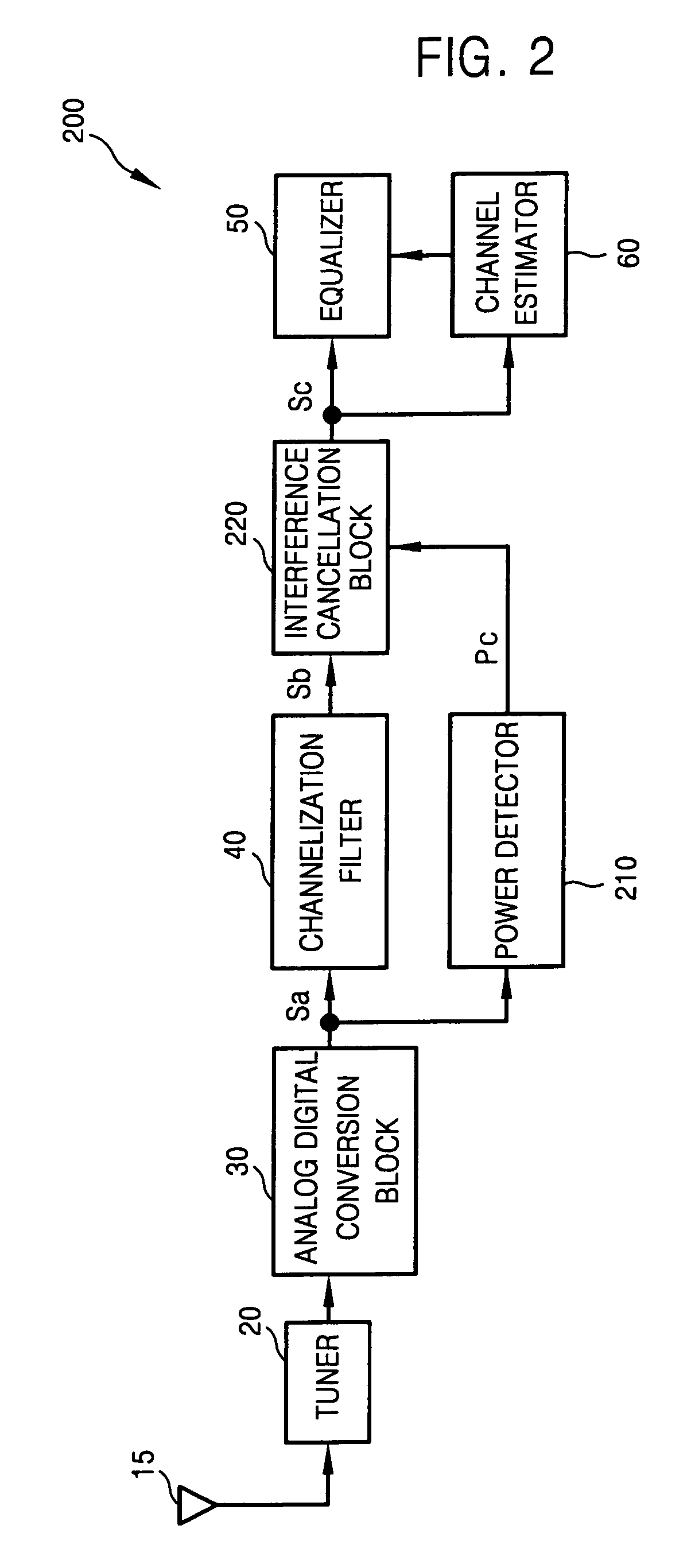Method and apparatus for removing channel interference in wireless communication system
a wireless communication system and receiver technology, applied in the field of receivers in wireless communication systems, can solve the problems of wireless communication system performance, co-channel interference and adjacent-channel interference, and achieve the effect of improving the sensitivity of the receiver and increasing the reliability of removing channel interferen
- Summary
- Abstract
- Description
- Claims
- Application Information
AI Technical Summary
Benefits of technology
Problems solved by technology
Method used
Image
Examples
Embodiment Construction
[0025]FIG. 2 is a block diagram of a receiver 200 of a wireless communication system according to an embodiment of the present invention. Referring to FIG. 2, the receiver 200 comprises an antenna 15, a tuner 20, an analog-digital conversion block 30, a channelization filter 40, an equalizer 50, a channel estimator 60, a power detector 210 and an interference cancellation block 220.
[0026]The tuner 20 tunes to a signal having a frequency of a channel to be received through the antenna 15 and converts the tuned signal into a (baseband) signal having a baseband frequency.
[0027]The analog-digital conversion (ADC) block 30 samples the (baseband) signal having the baseband frequency and changes the sampling ratio of the sampled signal. Typically, a Sigma-Delta converter is used as a sampling circuit (not shown) for sampling the signal having the baseband frequency and a CIC filter (Cascaded Integrator Comb filter) is used as a filter (not shown) for changing the sampling rate.
[0028]The po...
PUM
 Login to View More
Login to View More Abstract
Description
Claims
Application Information
 Login to View More
Login to View More - R&D
- Intellectual Property
- Life Sciences
- Materials
- Tech Scout
- Unparalleled Data Quality
- Higher Quality Content
- 60% Fewer Hallucinations
Browse by: Latest US Patents, China's latest patents, Technical Efficacy Thesaurus, Application Domain, Technology Topic, Popular Technical Reports.
© 2025 PatSnap. All rights reserved.Legal|Privacy policy|Modern Slavery Act Transparency Statement|Sitemap|About US| Contact US: help@patsnap.com



